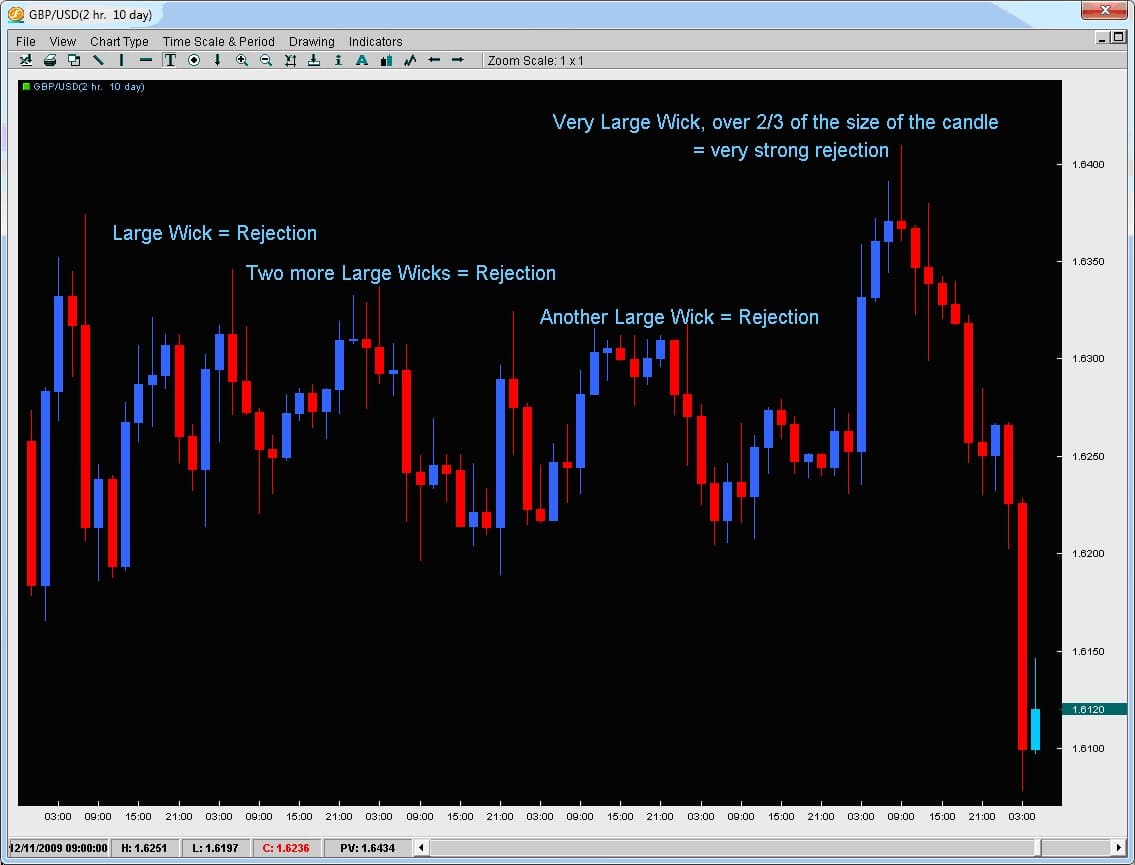Trading Price Action Wicks in the Forex Market
Wicks are an interesting phenomenon in price action formations and are virtually a part of every candle.Wicks can form on the top, bottom or both sides of a candle and represent the highs and lows of the price action for that candle on that time period.
What is important to remember about learning to read price action and wicks is that the wicks themselves are ‘rejection’ areas where the market simply rejected the prices of the wick.
It is important to note we are talking about the closes of candles and the wicks that form after because until a candle closes, it could be anything.However, once it closes, its final and its stamp is permanent.
When we have a wick that is large, that wick is clearly communicating to us for that time period (time compression for the candle) where the market was not accepting price.
If the prices were accepted, then price would remain there for a decent amount of time and close there.However, the fact that price does not close there means the market is rejecting that price value for that time.
If we are talking about 5min charts, then the market has rejected that price level via the wick for only 5minutes which is not that significant.However, when we start to look at 4hr or daily charts, this is significant.If you think about it, day traders are only witnessing two 4hr candles in a day, max three so for price to have a long wick on a 4hr chart is very significant as any day trader will take notice of the 4hr rejection as being a long period of time for price to be rejected – hence they will really have to think about trading against such a price action formation.Minimally, we suggesting looking at nothing less than the 2hr chart for significant wicks.
Taking a look at the example below, notice how every time the GBPUSD reversed, it did so with a very large wick and almost at the same price level?This was telling us the market simply did not accept prices at these levels with sellers aggressively entering the market quickly causing the pair to drop fast and not even close at those levels.The most notable one was the last wick with the wick being over 2/3 of the entire candles price range suggesting there was competition to sell the pair that high.

If the long wick is on a daily chart, day traders from all three sessions will have to take note of it and really be confident about their trade to go against the wick which is where the market rejected price for that entire day.If you are a day trader, you are only looking to be in a trade for a matter of hours and likely targeting an amount of pips less than the daily range for that pair (or at least you should be).
With that being said, they are also likely either targeting the price action within the days range or a breakout.However, what price levels are they watching if trading breakouts?
The highs and lows of the days candle which includes the wicks.And if the wicks represent a rejection zone, any day trades will have to be outside of it, thus making the chances of trades being placed inside the region of the wick less likely.
It should be noted when analyzing price action that the markets will usually make a second attempt to breach a price level before it gives up.Thus, if someone is going to reverse a pair, using the tail end of the wick offers the trader good risk/reward opportunities.
To learn how to find and trade these price action strategies, check out our Price Action Course which teaches you simple, rule-based proprietary price action strategies based upon 10+ years of quantitative data and analysis.

what effect of wick in stock price.
Hello Manoj,
Good question. I’ll be doing a piece on it soon, so are you ok waiting for a longer discussion on it?